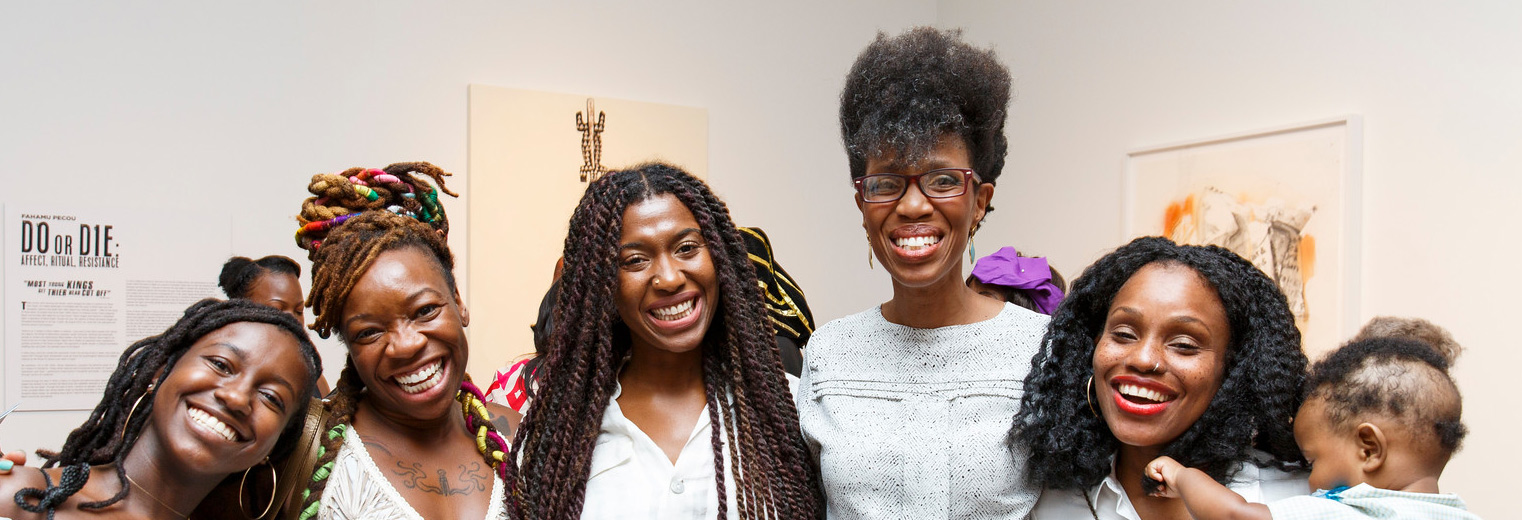

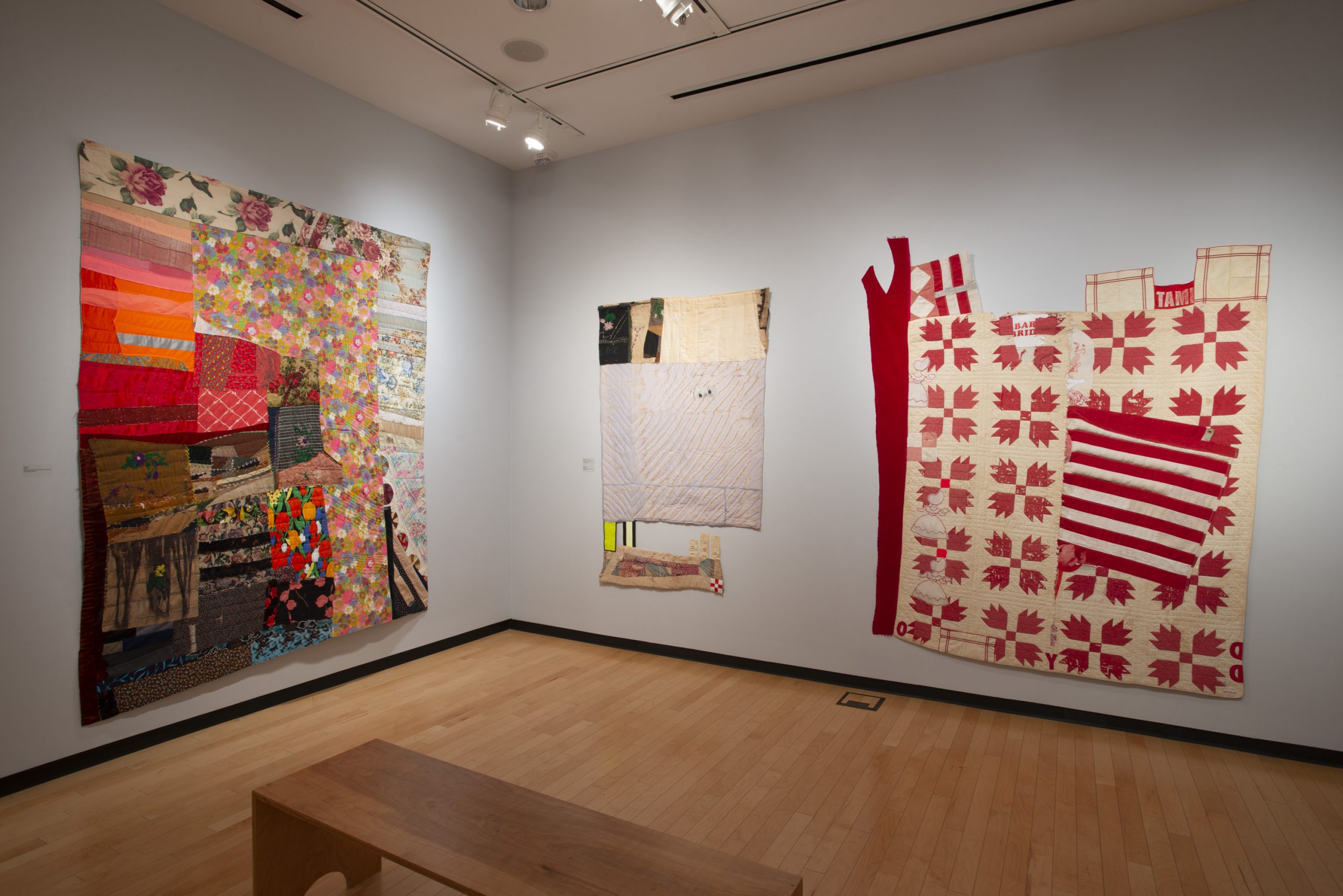
One glance at Coulter Fussell’s exhibition The Raw Materials of Escape is all it takes to become engulfed by the artist’s seamlessly effortless entanglement between craftsmanship and painterly technique. Her background as a painter, the daughter of a quiltmaker, and her fascination with 20th century art all contribute to the creative product of her limitless art. Coulter Fussell is a textile artist that aligns with traditional quilting craftsmanship while also incorporating the contemporary techniques of a painting. Fussell’s unconventional practice stirs the conversational debate around whether her work is considered to be more like quilts or paintings.
When I first viewed this exhibition, I had trouble classifying the work as a specific type of artform, and after interviewing Coulter Fussell I discovered that was, in fact, exactly what she intended. Coulter explains herself saying, “not only do I just not want the viewers to categorize my work in a certain way but I don’t want them to categorize quilts in a certain way… I would call myself an artist but I would also categorize myself as a craftsman”. Her lighthearted perspective towards art has enabled her to freely draw from more than one category of creation unconfined by artist rules written by others. Through her work she redefines what an artist is while also reframing the perception of craft. Growing up, she always considered her mother an artist and was inspired by the local folk art surrounding her. However, her inspiration from 20th century artists have shaped her identity as an artist and is most visually prevalent in her work.
The structural design of Fussell’s art plays off work inspired by Robert Rauschenberg, and her contemporary technique mimics the brushstrokes of Alma Thomas’s paintings. Rauschenberg’s 1955 piece, Bed, is a mixed media piece that incorporates the use of a quilt. In other works such as Minutiae, 1954, Rauschenberg combined fabric with oil paint, wood, metal, plastic, and wire, pushing the artistic boundaries of categorization. The work of both Rauschenberg and Fussell share the characteristic of being a nonfunctional art made of functional materials.
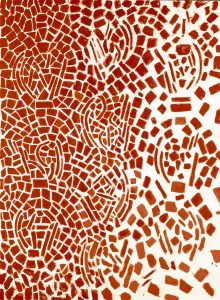
Alma Thomas, Untitled (Music Series), 1978. Acrylic on canvas, Smithsonian American Art Museum, Gift of the artist, 1978.40.5
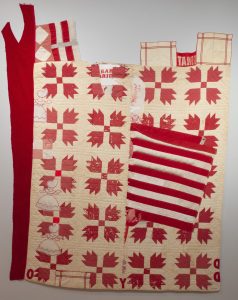
Coulter Fussell, Red and White, 2019. Mixed media. Installation view, photo: Rick Rhodes.
Alma Thomas’s paintings and Fussell’s work both utilize the vibrancy of colors and abstract geometric shapes while paying close attention to light. Analyzing Thomas and Fussell’s work side by side reveals the visual similarities shared between their work. Fussell uses a painterly technique when approaching her work, as she explained her process saying, “the very first thing I do that is more painterly than a quilt maker is I think in terms of how to get from a dark area to a light area… visualizing a light source shining into a dark room.” She acts upon her instinct as a painter to find a balance between light and dark. Despite working with fabric, her work directly references Thomas’s paintings. “The way I make each stitch is like an Alma Thomas brush stroke,” Fussell states, “and the stitching on the back of my completed quilt is like an Alma Thomas painting.” Fussell ignores the limitations of rules by integrating the traditional practice of quiltmaking with her painterly vision.
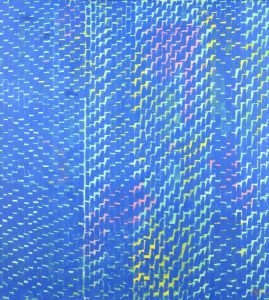
Alma Thomas, Celestial Fantasy, 1973. Acrylic on canvas, Smithsonian American Art Museum, Bequest of the artist, 1980.36.11
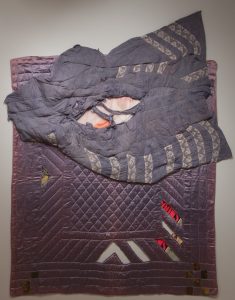
Coulter Fussell, Our Rooms, 2019. Mixed media. Installation view, photo: Rick Rhodes.
“I didn’t write the rules, so why should I abide by them,” Fussell asserts, using her creative intuition to break artistic barriers. While there may be no clear answer on how to categorize Coulter Fussell’s work, I encourage all to view the equitness of Raw Materials of Escape, with an open mind. Letting go of our need to categorize can open another door for creative understanding.
By Shields Norvell, Halsey Institute intern